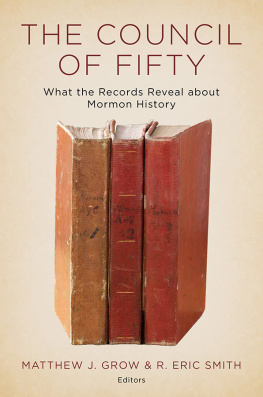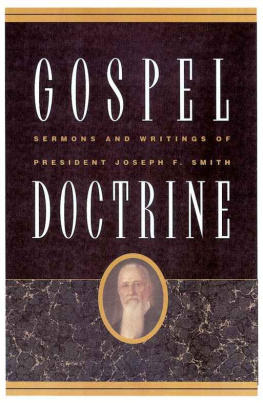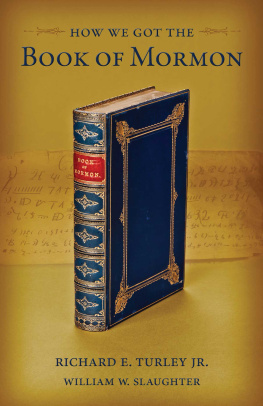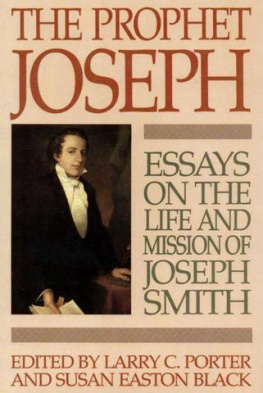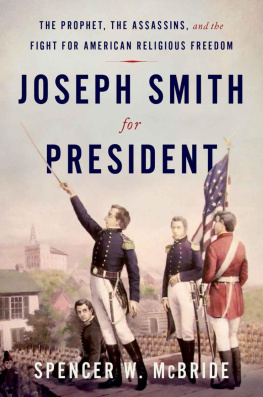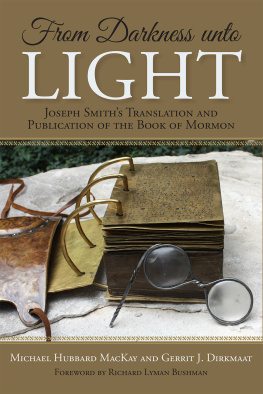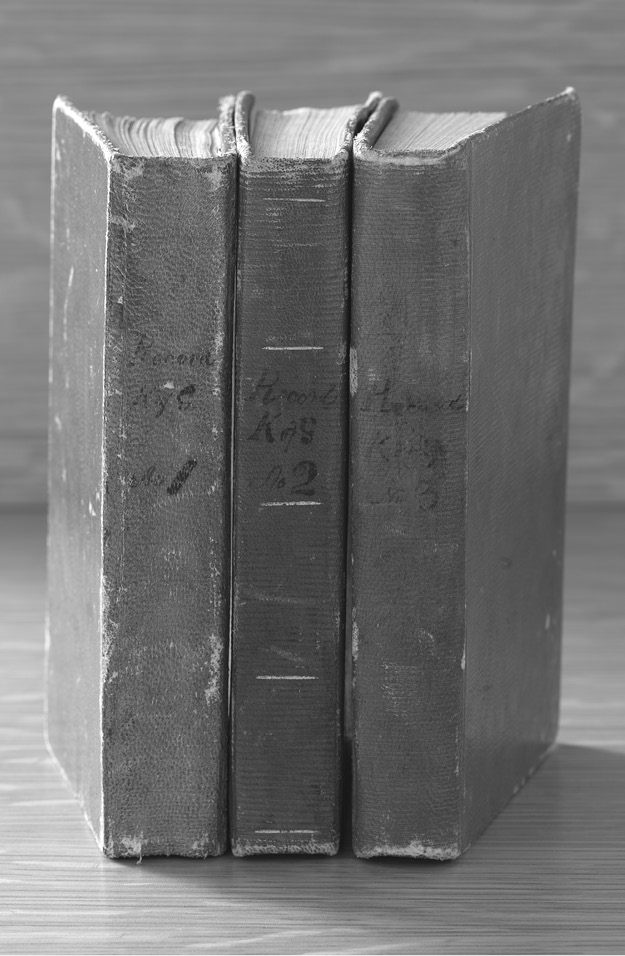Contents
introduction
Before he traveled to Carthage, Illinois, in late June 1844 to surrender on an arrest warrant, Joseph Smith called William Clayton, a trusted clerk, to his side. Less than three months earlier, Joseph Smith had formed a confidential council consisting of roughly fifty men. The council, which became known as the Council of Fifty or Kingdom of God, was to look to some place where we can go and establish a Theocracy either in Texas or Oregon or somewhere in California. Furthermore, Joseph Smith had told them, the council was designed to be got up for the safety and salvation of the saints by protecting them in their religious rights and worship. The members of the council believed that it would protect the political and temporal interests of the Church in anticipation of the return of Jesus Christ and his millennial reign.
Now, shortly before going to Carthage, he instructed Clayton to destroy or hide the records of the council. Joseph Smith feared that the candid discussions within the Council of Fiftyincluding the desire to establish a theocracycould be used against him in either a court of law or, more likely, the court of public opinion. Clayton opted to bury the records in his garden.
A few days after Joseph Smith was killed by a mob in Carthage, Clayton dug up the records of the Council of Fifty. He then copied the minutes of the councils meetings into more permanent record books and continued taking minutes after Brigham Young reassembled the Council of Fifty in February 1845. Over the next year, the council met to discuss how to govern the city of Nauvoo after the state of Illinois revoked its municipal charter and how to find a settlement place for the Latter-day Saints in the West. The councils final meetings in Nauvoo occurred in the partially completed Nauvoo Temple in January 1846, just a few weeks before the Saints began to cross the frozen Mississippi on their way west.
As they headed west, Church leaders took the minutes of the council meetings with them. The council met for periods of time in Utah Territory under Brigham Young and then under his successor, John Taylor. At some point, the records of the council became part of the archives of the Churchs First Presidency.
Historians have long known of the existence of the council and the minutes of its meetings. Until recently, though, the minutes had never been made available for historical research. Because of their inaccessibility and because historians knew that they were made during a critical and controversial era of Mormon historya mystique grew up surrounding the minutes. What did they contain? Why had they been withheld? Some speculated that the councils minutes must contain explosive details about the final months of Joseph Smiths life or the initial era of Brigham Youngs leadership of the Church. Indeed, the minutes had become a sort of holy grail of early Mormon documents.
Other records regarding the councils activities are likewise scarce. Members of the council took an oath of confidentiality when they joined, meaning that many members left no records that discussed the council. Nevertheless, some members later spoke about the council publicly and others left private records in journals and letters. Over the past several decades, these additional records have allowed several scholars especially Klaus J. Hansen, D. Michael Quinn, Andrew F. Ehat, and Jedediah S. Rogersto gain an understanding of the Council of Fifty. While they each made important contributions, lack of access to the core minutes meant that their scholarship remained tentative, as each recognized.
Since the beginning of the Joseph Smith Papers Project in the early 2000s, project leaders have emphasized that the papers will contain a comprehensive edition of all of Smiths papers, published in print, online, or both. Many outside the project initially wondered if that would include documents that had previously not been made accessible to scholars. The first major indication that the edition would truly be comprehensive was the publication of one of Joseph Smiths manuscript revelation books, called the Book of Commandments and Revelations, that had been part of the collection of the Churchs First Presidency and had never before been made available. Still, historians questioned whether the project would ever publish the minutes of the Council of Fifty.
The minutes had never been previously available for at least two key reasons: first, because they were considered confidential during the councils meetings, and later stewards of the records wished to honor that confidentiality; and second, because once they were in the possession of the First Presidency, they were seldom used or read by Church leaders, and there was no pressing reason to make them available. The Churchs commitment to publish all of Joseph Smiths documents as part of The Joseph Smith Papers provided the appropriate moment for their release.
We had the privilege of being involved with preparing the minutes for publication. In fall 2012, Matthew J. Grow was asked by Reid L. Neilson, managing director of the Church History Department, to study a transcript of the Council of Fifty minutes andwith the assistance of Ronald K. Esplin, a general editor of the Joseph Smith Papersto write an introduction to the minutes that would help inform Church leaders regarding their contents.
Several months later, we learned that the First Presidency had granted permission to use the councils minutes in the publication of Joseph Smiths final journals (the third volume of the Journals series of The Joseph Smith Papers ). This volume was nearly complete, but we had put publication on hold pending this decision because the journal refers to the Council of Fifty and we hoped to use insights from the minutes in our annotation. Significantly, the First Presidency also granted permission to publish the councils minutes as a separate volume in The Joseph Smith Papers.
These three small record books contain William Claytons minutes of the Nauvoo Council of Fifty. Photograph by Welden C. Andersen. Courtesy of Church History Library, Salt Lake City.
After project leaders learned this news, they assembled a meeting of the staff of the Joseph Smith Papers Project on May 1, 2013. At the meeting, Elder Steven E. Snow, Church Historian and Recorder, announced the decision to the jubilation of the staff. We were then allowed to see and hold the three small record books that contained the councils minutes in the distinctive handwriting of William Clayton. As historians and editors who had long studied the Council of Fifty and hoped that the minutes would be included in The Joseph Smith Papers , this was a remarkable meeting. Eric Smith recorded in his journal that evening, This is a day long anticipated by Mormon historians: the opportunity to publish these minutes, which the world has known about for a long time and which critics of the Church have often conjectured contain material that will embarrass the Church. I feel privileged to be involved with this project and to be one of the few people who has seen these minutes.
We were asked to keep the decision confidential until a public announcement was made. Notwithstanding our collective excitement, we honored the request not to talk about the prospective publication of the minutes until Elder Snow made a public announcement in an interview with the Church News in September 2013. Following the public announcement, we could talk more freely about our work on the minutes.

